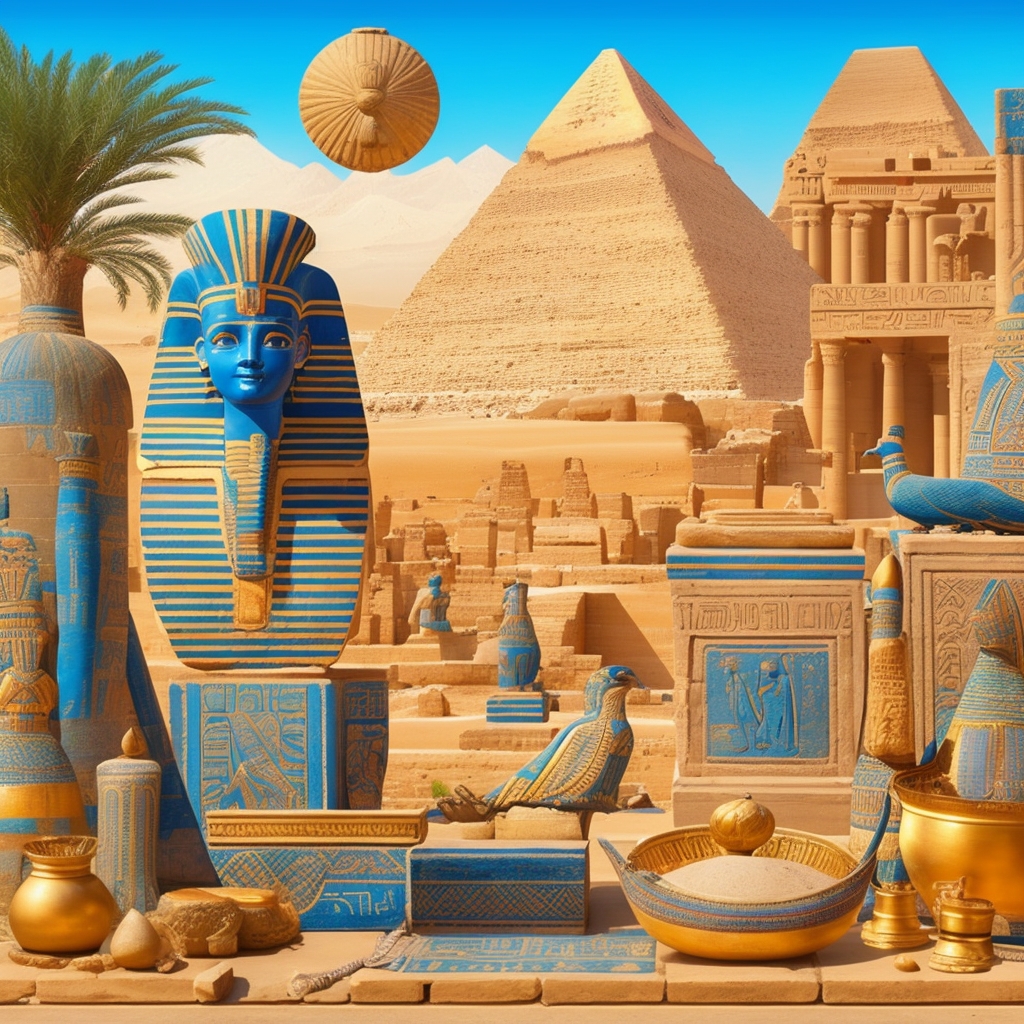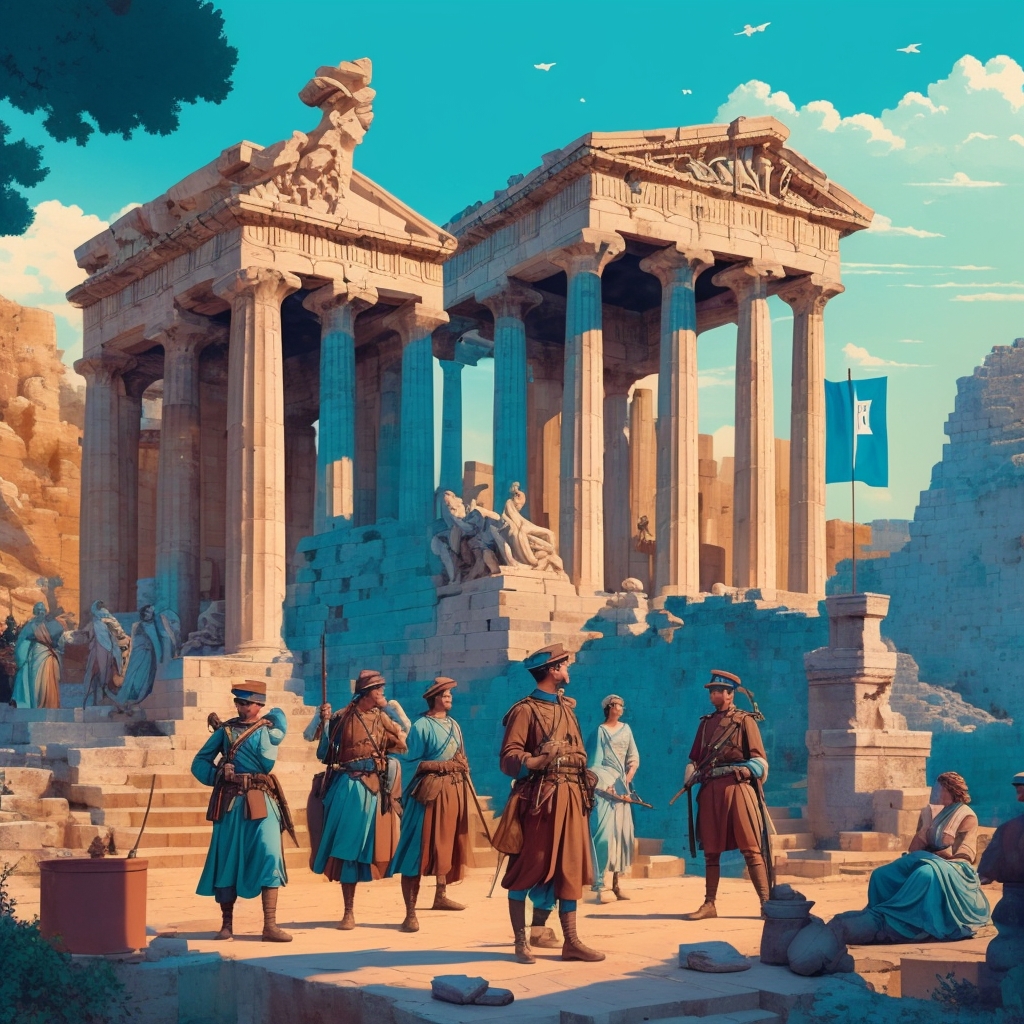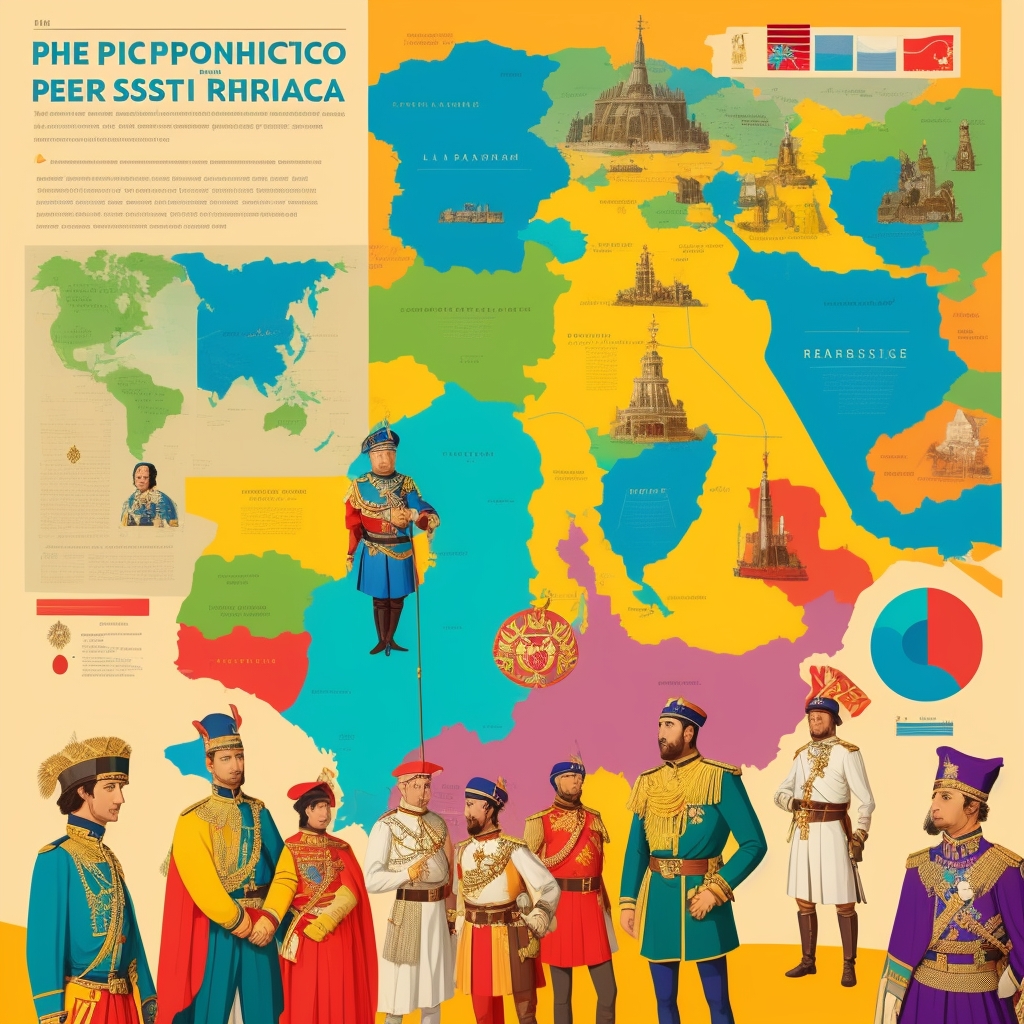Ancient Egypt is truly a treasure trove of human history, renowned for its majestic pyramids, iconic pharaohs, and enduring contributions to civilization. What’s particularly fascinating, and something I find incredibly insightful, is how its linguistic and writing systems, which evolved over several millennia, offer a direct, unfiltered window into the very soul of this incredible culture. This article dives deep into how language and writing developed in Ancient Egypt, highlighting key transformations and their profound impact on Egyptian communication and society.
The story of Egyptian writing is fundamentally a story of human ingenuity and adaptation. Over the course of more than three thousand years, the ancient Egyptians developed not just one, but multiple interconnected writing systems that served different purposes and social classes. From the sacred hieroglyphs carved into temple walls to the everyday scribbles of merchants on pottery shards, each form of writing tells us something unique about how this civilization communicated, governed, and preserved its knowledge for future generations.
The Hieroglyphic Script: Origins and Evolution
When we think of Ancient Egypt, hieroglyphic writing is often the first image that comes to mind, and for good reason—it’s one of the most recognizable and, frankly, awe-inspiring symbols of this ancient civilization. First appearing around 3100 BCE, this intricate script was a brilliant blend of logograms (representing objects or ideas) and phonograms (representing sounds), meticulously used to record everything from grand historical events and solemn religious rituals to the mundane details of administrative activities.
The development of hieroglyphic writing coincided remarkably with the unification of Upper and Lower Egypt under the first pharaohs, suggesting that the need for a standardized writing system was intimately connected to the emergence of centralized political power. The famous Narmer Palette, dating to around 3100 BCE, provides some of our earliest examples of hieroglyphic writing being used to commemorate royal achievements and establish political legitimacy.
Early Hieroglyphs: More Than Just Pictures
Interestingly, the earliest hieroglyphs were primarily logographic, meaning they represented concrete objects or ideas. Imagine seeing an owl symbol, and it simply was an owl. But here’s the thing though: language is dynamic, always adapting, and the Egyptians were genuinely ingenious. Over time, the system became far more complex, brilliantly incorporating phonograms for specific sounds. This innovation allowed for much greater precision in written communication, moving beyond simple pictorial representation to convey abstract concepts and grammatical nuances. It’s a testament to their sophisticated understanding of how language works.
The genius of the hieroglyphic system lay in its flexibility. A single symbol could function in multiple ways depending on context—as a logogram representing the object itself, as a phonogram representing a sound, or as a determinative helping to clarify meaning. For example, the symbol of a house could represent the concept “house,” the sound “pr,” or serve as a determinative in words related to buildings or structures. This multi-layered approach created a writing system of remarkable depth and nuance, capable of expressing the full complexity of human thought and experience.
Archaeological evidence from sites like Abydos and Hierakonpolis reveals that early hieroglyphic inscriptions were often accompanied by numerical notations and administrative symbols, indicating that writing served practical bureaucratic functions from its very inception. The famous ivory labels from the tomb of King Den at Abydos, dating to around 2950 BCE, demonstrate how hieroglyphs were used to record royal activities, religious festivals, and administrative procedures with remarkable precision and detail.
Transition to Hieratic: The Scribe’s Swift Hand
Due to the sheer complexity of hieroglyphs—can you just imagine how long it would take to carve all those intricate symbols into stone or paint them precisely?—a more cursive script known as hieratic was developed for everyday use. Primarily employed by the diligent scribes, who were truly the backbone of ancient Egyptian bureaucracy, hieratic made it significantly easier to write quickly on papyrus and ostraca (pottery shards or stone flakes used for notes). This crucial development wasn’t just about speed; it genuinely enabled written culture to spread beyond the exclusive circles of royal and religious elites, fostering a more widespread, albeit still specialized, literacy. It’s a subtle but powerful example of how practical needs drive linguistic innovation.
The emergence of hieratic script around 2700 BCE represented a revolutionary leap in the democratization of writing. While hieroglyphs remained the domain of monumental inscriptions and sacred texts, hieratic became the workhorse of Egyptian administration, education, and literature. The famous Edwin Smith Papyrus, a medical text dating to around 1600 BCE, exemplifies the sophisticated use of hieratic for technical and scientific writing, demonstrating how this script enabled the preservation and transmission of specialized knowledge across generations.
Scribes who mastered hieratic held positions of tremendous respect and influence in Egyptian society. They served not only as record-keepers but as advisors, teachers, and cultural preservers. The satirical text known as “The Satire of the Trades,” written in hieratic during the Middle Kingdom, humorously extols the advantages of the scribal profession over other occupations, revealing the high social status accorded to those who could read and write. Training to become a scribe was rigorous and lengthy, often beginning in childhood and requiring years of practice copying classical texts, mathematical problems, and administrative documents.
Demotic: A Script for the People
Fast forward to around the 7th century BCE, and we see the emergence of demotic, a new and even more simplified script. It’s almost like a shorthand version of hieratic, making it considerably easier and quicker to write. Unsurprisingly, demotic quickly became widely adopted in administrative and commercial documents, playing a truly crucial role in making writing accessible to a broader segment of the population. It was the script of daily life for many, reflecting a fascinating societal shift towards greater accessibility in written communication—a kind of ancient democratization of literacy.
The rise of demotic coincided with significant political and social changes in Egypt, including increased trade with Mediterranean civilizations and the growing importance of merchant classes. Unlike its predecessors, demotic was used not just by professional scribes but by merchants, craftsmen, and even some farmers who needed to conduct business transactions, sign contracts, or maintain records. This broader adoption of literacy had profound implications for Egyptian society, enabling more complex economic relationships and contributing to the development of a more sophisticated legal system.
Demotic documents from sites like Elephantine Island provide fascinating insights into the daily lives of ordinary Egyptians. Marriage contracts, property deeds, tax receipts, and personal letters written in demotic reveal a society where written communication had become integral to social and economic life. The famous Elephantine Papyri, dating from the 5th century BCE, include correspondence from a Jewish military colony stationed on the island, demonstrating how demotic served as a lingua franca for diverse communities within Egypt.
Linguistic Evolution: A Living Language
The Egyptian language itself wasn’t static; it constantly evolved through different stages—Old Egyptian, Middle Egyptian, and Late Egyptian—each marked by distinct shifts in grammar and vocabulary. What’s truly fascinating is how these changes were often influenced by contact with other vibrant cultures, such as the Greeks and Assyrians, reflecting Egypt’s dynamic position in the ancient world. It really shows you that even in antiquity, languages were living, breathing entities, absorbing influences and adapting over time, much like a river changing course. The final stage, Coptic, even adopted the Greek alphabet with additional signs, further illustrating this external influence.
Old Egyptian, used during the Old Kingdom (c. 2686-2181 BCE), represents the earliest fully developed stage of the language. This period saw the creation of the Pyramid Texts, the world’s oldest religious literature, carved into the walls of pyramids at Saqqara. These texts, written in a highly archaic and formal register of Old Egyptian, provide invaluable insights into early Egyptian religious beliefs and linguistic structures.
Middle Egyptian, flourishing during the Middle Kingdom (c. 2055-1650 BCE), is often considered the classical stage of the language. It was during this period that many of Egypt’s greatest literary works were composed, including “The Story of Sinuhe,” “The Eloquent Peasant,” and various wisdom texts. Middle Egyptian became the standard for formal writing and remained in use for religious and monumental inscriptions long after it had ceased to be spoken, much like Latin in medieval Europe.
Late Egyptian, emerging during the New Kingdom (c. 1550-1077 BCE), reflected significant changes in pronunciation, grammar, and vocabulary. This stage of the language shows clear influences from contact with other Near Eastern peoples, including Semitic-speaking populations in the Levant and Nubian cultures to the south. The Amarna Letters, diplomatic correspondence from the reign of Akhenaten, provide examples of how Egyptian scribes adapted their writing to communicate with foreign courts, often incorporating loan words and modified grammatical structures.
Concrete Examples and Use Cases: Unlocking the Past
The Rosetta Stone: A Decipherment Triumph
The discovery of the Rosetta Stone in 1799 was, without exaggeration, pivotal to our modern understanding of hieroglyphs. This remarkable trilingual stela fragment—inscribed with the same decree in hieroglyphic, demotic, and ancient Greek—provided the key. It allowed the brilliant Jean-François Champollion to finally decipher the script in 1822, effectively unlocking millennia of Egyptian history and knowledge. It’s a truly incredible story of linguistic detective work, one that completely revolutionized Egyptology!
The Rosetta Stone’s significance extends far beyond its role as a decipherment tool. The decree it contains, issued by priests in Memphis in 196 BCE, provides valuable insights into the political and religious dynamics of Ptolemaic Egypt. The text honors Ptolemy V Epiphanes and details various benefactions he provided to temples and priests, illustrating the complex relationship between Hellenistic rulers and traditional Egyptian religious institutions.
Champollion’s breakthrough came through his recognition that hieroglyphs could represent both sounds and ideas, and his crucial insight that the cartouches (oval enclosures) contained royal names. By comparing the Greek text with the hieroglyphic version, he was able to identify the names of Ptolemy and Cleopatra, establishing the phonetic values of several hieroglyphic signs. This methodical approach, combining linguistic analysis with historical knowledge, established the foundation for all subsequent work in Egyptian philology.
The impact of the Rosetta Stone’s decipherment cannot be overstated. Within decades of Champollion’s breakthrough, scholars were reading Egyptian texts spanning three millennia, from the Pyramid Texts of the Old Kingdom to the latest hieroglyphic inscriptions of the Roman period. This sudden access to such a vast corpus of literature transformed our understanding of ancient history, religion, science, and culture.
Administrative and Religious Use: Echoes of a Civilization
When you visit majestic temples like Karnak and Luxor, you’re not just seeing stones; you’re witnessing history carved in hieroglyphs. These monumental texts often glorify gods and meticulously document the achievements of pharaohs. But it wasn’t all grand pronouncements; administrative papyri, often written in hieratic or demotic, provide vital, granular insights into the economic and bureaucratic workings of Ancient Egypt. They paint a vivid picture of daily life, from tax records and legal disputes to mundane trade transactions—a testament to how deeply intertwined writing was with every facet of their sophisticated society. It’s truly amazing how much we can learn from these seemingly ordinary documents.
The temple inscriptions at Karnak, accumulated over more than two millennia, constitute one of the world’s largest collections of ancient texts. These inscriptions serve multiple purposes: they record historical events, preserve religious rituals, establish legal precedents, and demonstrate royal piety. The famous Karnak King List, carved during the reign of Thutmose III, provides a chronological record of Egyptian rulers, while the detailed accounts of military campaigns offer insights into ancient warfare, diplomacy, and geography.
Religious papyri, such as the various versions of the Book of the Dead, demonstrate the sophisticated theological thinking of ancient Egyptians. These texts, written primarily in hieratic, contain spells, prayers, and instructions designed to guide the deceased through the afterlife. The evolution of these texts over time reveals changing religious beliefs and practices, while their widespread distribution indicates the importance of written religious literature in Egyptian society.
Administrative documents provide equally fascinating insights into the practical workings of Egyptian civilization. The Wilbour Papyrus, dating to the reign of Ramesses V, contains detailed land surveys and tax assessments for Middle Egypt, revealing the sophisticated bureaucratic systems that enabled the pharaonic state to function effectively. Similarly, the Hekanakhte Papers, discovered near Thebes, provide an intimate glimpse into the economic activities of a farmer-priest during the Middle Kingdom, including correspondence with family members, loan agreements, and field management records.
Legal documents written in demotic, such as those found at Tebtunis and other Fayum sites, illuminate the development of Egyptian law and jurisprudence. Marriage contracts, adoption papers, property transfers, and court proceedings reveal a sophisticated legal system that protected individual rights while maintaining social order. These documents also demonstrate the increasing complexity of Egyptian society during the Late Period, as traditional structures adapted to new economic and political realities.
Key Insights and Enduring Relevance
- The evolution of writing in Ancient Egypt wasn’t just a technical advancement; it fundamentally enabled more efficient communication and significantly strengthened the central administration, acting as a crucial backbone for their vast empire.
- The transition from the intricate hieroglyphic to the more fluid hieratic and then the simplified demotic scripts beautifully reflects a broader societal trend toward simplification and accessibility in written communication. This progression is a clear indicator of evolving societal needs.
- Understanding this linguistic evolution is absolutely key to studying Egypt’s complex cultural and political interactions over time. It helps us piece together not just what they said, but how they thought and interacted with the world, offering a truly holistic view.
The development of Egyptian writing systems also reveals important patterns about how civilizations adapt their communication technologies to meet changing needs. The coexistence of multiple scripts—hieroglyphic, hieratic, and demotic—each serving different functions and social contexts, demonstrates a sophisticated understanding of the relationship between form and function in written communication. This multi-script approach allowed Egyptian civilization to maintain both continuity with its ancient traditions and flexibility in adapting to new circumstances.
Furthermore, the Egyptian experience illustrates how writing systems can serve as vehicles for cultural transmission and identity preservation. Even as Egypt came under foreign rule—first by the Persians, then the Greeks, and finally the Romans—the continued use of traditional Egyptian scripts helped maintain cultural continuity and national identity. The persistence of hieroglyphic writing in temple contexts well into the Roman period demonstrates the deep connection between script and cultural identity.
The influence of Egyptian writing extends far beyond Egypt itself. The Proto-Sinaitic script, developed by Semitic-speaking peoples in the Sinai Peninsula around 1700 BCE, borrowed several signs from Egyptian hieroglyphs and represents a crucial link in the development of alphabetic writing. This script eventually evolved into the Phoenician alphabet, which in turn gave rise to the Greek, Latin, and ultimately most modern alphabetic systems. In this sense, every time we write a letter, we’re participating in a tradition that traces its roots back to ancient Egyptian scribes.
FAQ: Your Questions Answered
Q1: How were hieroglyphs taught in Ancient Egypt? Hieroglyphs were taught in specialized schools, often attached to temples, which served as centers of learning, much like our universities today. Students trained rigorously as scribes, mastering a wide range of symbols and their intricate meanings. The curriculum typically began with basic sign recognition and progressed through copying classical texts, learning mathematical calculations, and practicing various forms of composition. Interestingly, recent archaeological findings, such as the discovery of a ‘House of Life’ school at the Ramesseum in Luxor in April 2025, continue to shed light on these ancient educational practices, revealing evidence of school settings, practice boards, student exercises, and even toys used as teaching aids. These institutions, known as “Houses of Life,” were not merely schools but centers of learning where scribes, priests, and scholars preserved and transmitted knowledge across generations.
Q2: What’s the core difference between hieratic and demotic? Think of hieratic as a cursive, more formal version of hieroglyphs, primarily used for religious and administrative texts during the earlier periods of Egyptian history. Hieratic maintained a closer relationship to hieroglyphic forms and was typically written from right to left in vertical columns or horizontal lines. Demotic, on the other hand, is an even more simplified, everyday script that emerged much later, predominantly used for legal and commercial documents, making it much quicker for day-to-day transactions. Demotic was always written horizontally from right to left and featured highly abbreviated forms that bore little visual resemblance to their hieroglyphic origins. It’s a distinction that speaks volumes about their practical applications and the social contexts in which they were employed.
Q3: Why is the Rosetta Stone such a big deal? Its trilingual inscription was the ultimate linguistic “Rosetta Stone,” allowing scholars to finally decipher hieroglyphs after they had been unreadable for over a millennium. This breakthrough didn’t just translate words; it unlocked the entire language and vast corpus of Ancient Egyptian texts, opening up an entirely new world of historical understanding that was previously inaccessible. The stone’s importance lies not just in what it revealed about ancient Egypt, but in how it demonstrated the power of comparative linguistics and systematic scholarly investigation. It’s an unparalleled achievement in historical linguistics that continues to inspire modern efforts to decipher unknown scripts and languages around the world.
Q4: What external influences notably affected the Egyptian language? Contact with powerful cultures like the Greeks, Assyrians, Persians, and various Nubian kingdoms introduced new vocabulary, concepts, and even grammatical structures, significantly influencing the later stages of Egyptian, especially Late Egyptian and Coptic. Greek influence was particularly profound during the Ptolemaic period, when Greek became the language of administration while Egyptian continued to be spoken by the general population. Persian administrative terms entered Egyptian during the periods of Persian rule, while Semitic languages contributed vocabulary related to trade, warfare, and technology. It’s a prime example of linguistic cross-pollination, demonstrating how languages absorb and adapt elements from their surroundings, much like any living organism responding to its environment.
Q5: How did Ancient Egyptian writing influence other scripts? The impact was profound and far-reaching! Egyptian writing profoundly influenced scripts across North Africa and the Near East, most notably through the Proto-Sinaitic script, which is widely considered a crucial precursor to several alphabetic systems we use even today. This influence extended through the Phoenician alphabet to Greek, Latin, and ultimately to most modern writing systems. Additionally, Egyptian scribal practices, including the use of papyrus, ink, and specific writing implements, spread throughout the ancient Mediterranean world. The concept of using determinatives to clarify meaning influenced several other ancient scripts, while Egyptian mathematical and astronomical notation systems contributed to the development of scientific writing in other cultures. It’s truly fascinating to trace that direct lineage from ancient pictograms to our modern letters and to recognize how Egyptian innovations in writing technology and methodology continue to influence how we communicate today.
Conclusion: A Legacy Carved in Time
The evolution of language and writing in Ancient Egypt truly reflects the richness and complexity of this ancient civilization. From the deeply symbolic hieroglyphs to the more accessible systems like hieratic and demotic, writing wasn’t merely a tool; it played an absolutely crucial role in preserving Egypt’s culture, history, and religious beliefs for millennia. Understanding these remarkable developments helps us grasp the profound cultural and political dynamics that shaped one of the most influential civilizations in human history.
The story of Egyptian writing is ultimately a story about human communication and the drive to preserve knowledge across time. The ancient Egyptians understood intuitively what modern scholars have confirmed: that writing is not just a means of recording information, but a technology that fundamentally shapes how we think, organize society, and understand our place in the world. Their sophisticated approach to developing multiple, complementary writing systems demonstrates a nuanced understanding of how different forms of communication serve different purposes and audiences.
The legacy of Egyptian writing extends far beyond the ancient world. Modern digital humanities projects are revealing new insights into how these ancient scripts functioned, while contemporary efforts to preserve endangered languages often draw inspiration from the Egyptian example of maintaining multiple writing traditions simultaneously. The Egyptian experience reminds us that writing systems are not merely technical tools but expressions of cultural identity and vehicles for transmitting the deepest values and knowledge of a civilization.
And the journey isn’t over; even today, cutting-edge digital projects, like the ‘Digital Pyramid Texts Project’ at Brown University, are leveraging machine learning and advanced computational methods to make these ancient writings more accessible than ever, constantly enriching our understanding of this incredible heritage. These modern technological approaches are revealing new patterns in ancient texts, identifying previously unknown connections between different periods and regions, and enabling scholars to ask questions that would have been impossible to investigate using traditional methods alone.
For those eager to dive deeper, authoritative institutions like the British Museum, the Metropolitan Museum of Art, and the Oriental Institute at the University of Chicago offer extensive resources on Egyptian scripts and their ongoing study. The field of Egyptology continues to evolve, with new discoveries regularly adding to our understanding of how the ancient Egyptians used writing to build and maintain one of history’s most enduring civilizations. Each newly discovered papyrus, each freshly excavated inscription, adds another piece to the vast puzzle of human communication and cultural development that began over five thousand years ago on the banks of the Nile.







